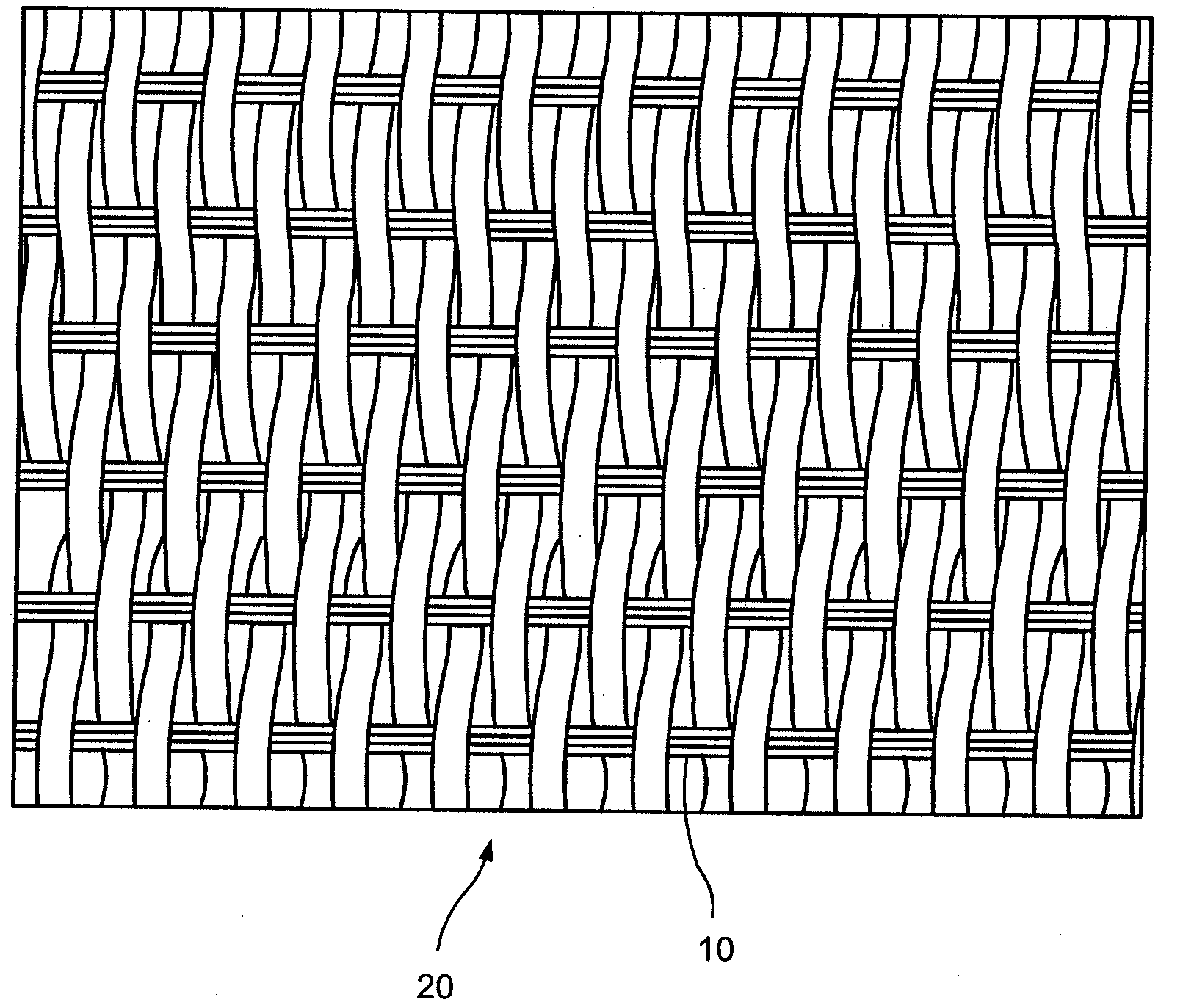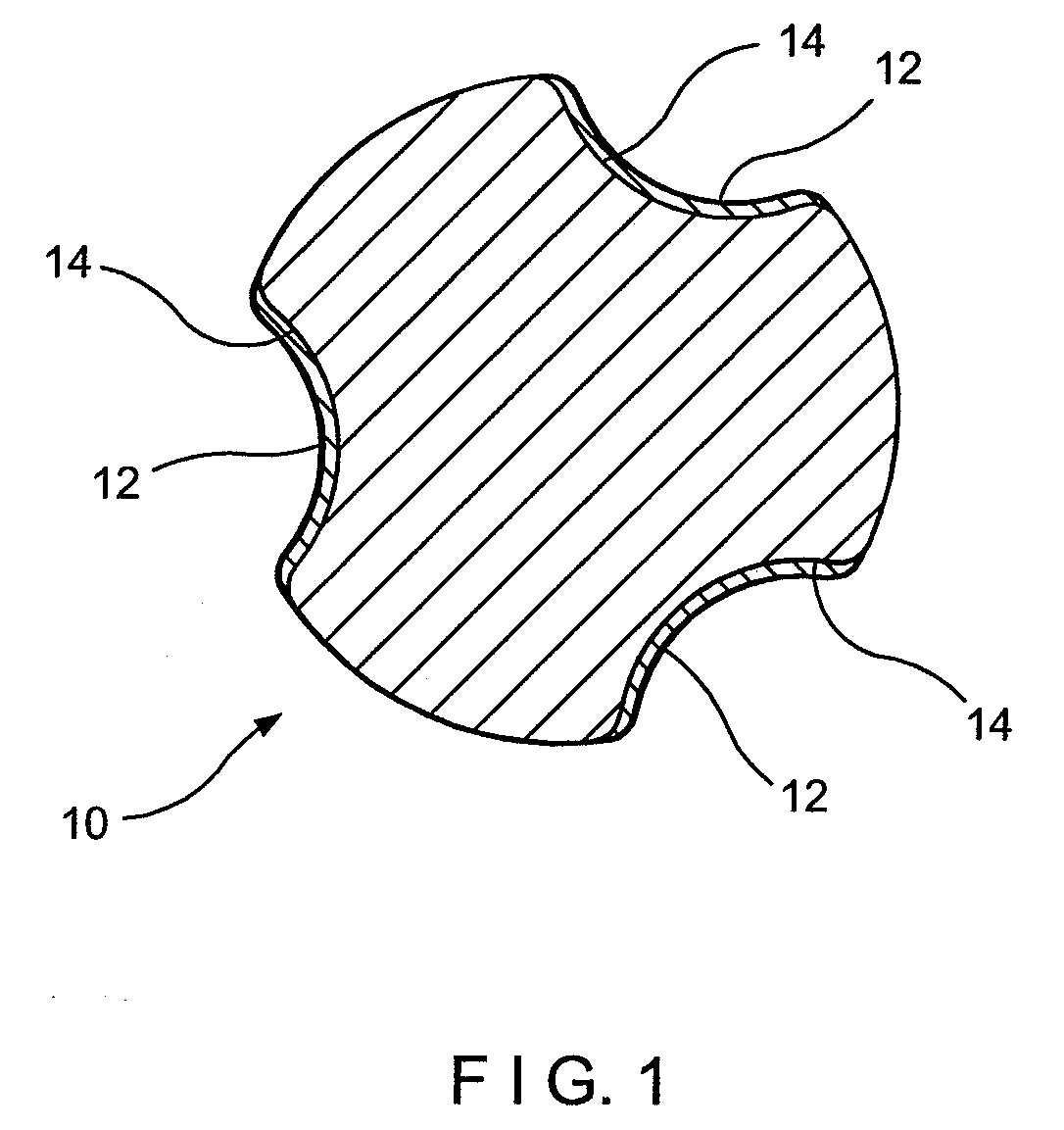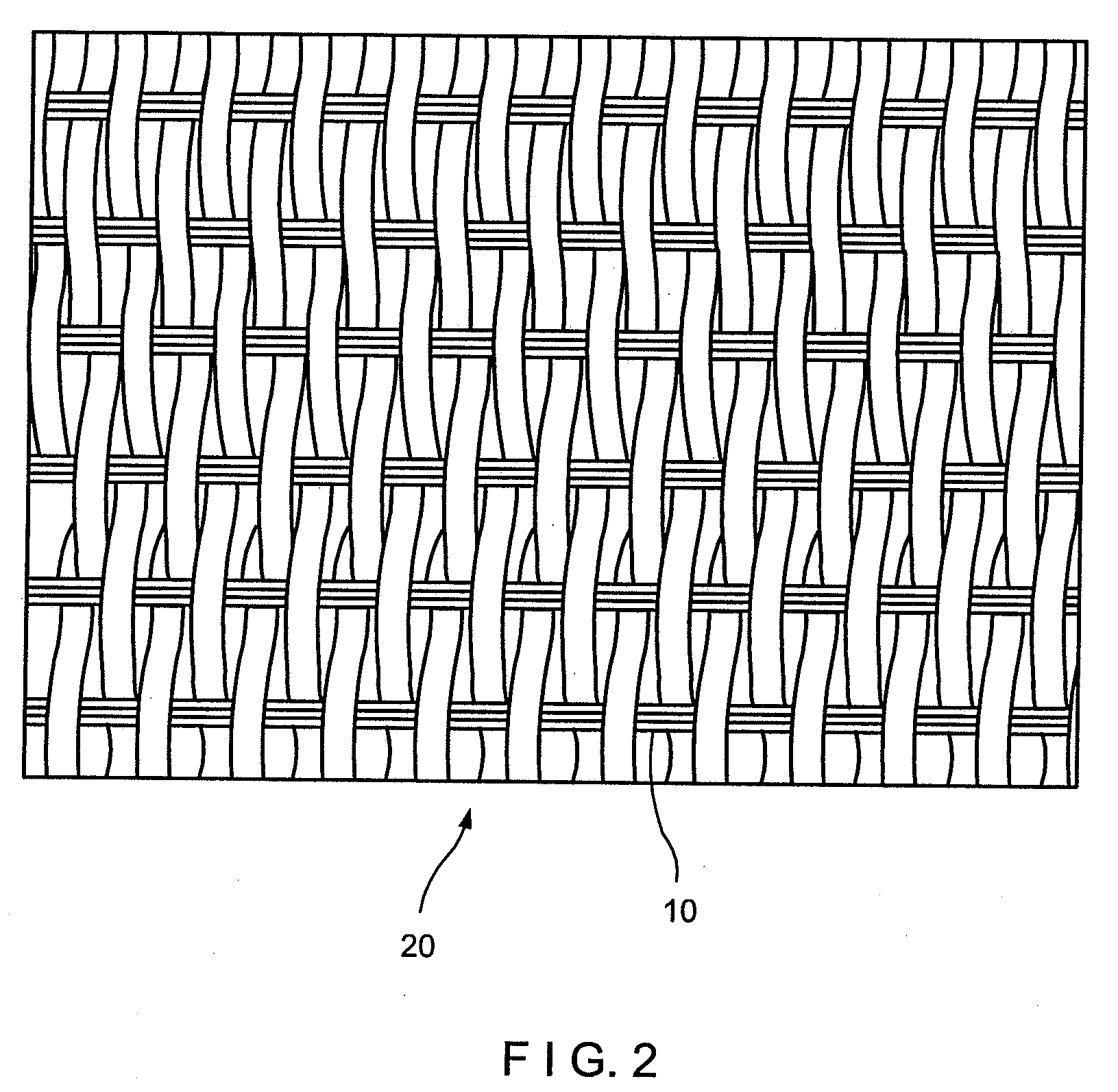Conductive Monofilament and Fabric
a monofilament and fabric technology, applied in knitting, weaving, transportation and packaging, etc., can solve the problems of limiting the design options of fabrics, affecting fabric performance, and limit the use of prior art methods
- Summary
- Abstract
- Description
- Claims
- Application Information
AI Technical Summary
Benefits of technology
Problems solved by technology
Method used
Image
Examples
Embodiment Construction
[0017]A preferred embodiment of the present invention will be described in the context of engineered fabrics, such as fabrics used in making nonwoven textiles in the airlaid, meltblown and / or spunbonding processes wherein the release of the nonwoven product formed on the fabric is improved by the elimination of static buildup. However, it should be noted that the invention is also applicable to other industrial fabrics such as dryer fabrics used in papermaking and other fabrics used in any “dry” applications where the dissipation of static electricity is required, for instance, through the fabric media. Also since electrically conductive material is also a good thermal conductor, other applications are possible where thermal conductivity is desirable. Some examples where the instant conductive or static dissipative yarns can be used is in the construction of power cables, such as for example oil well cables, high power transmission lines, as a grounding medium to prevent electrical ...
PUM
| Property | Measurement | Unit |
|---|---|---|
| static dissipative properties | aaaaa | aaaaa |
| conductive | aaaaa | aaaaa |
| metallic | aaaaa | aaaaa |
Abstract
Description
Claims
Application Information
 Login to View More
Login to View More - R&D
- Intellectual Property
- Life Sciences
- Materials
- Tech Scout
- Unparalleled Data Quality
- Higher Quality Content
- 60% Fewer Hallucinations
Browse by: Latest US Patents, China's latest patents, Technical Efficacy Thesaurus, Application Domain, Technology Topic, Popular Technical Reports.
© 2025 PatSnap. All rights reserved.Legal|Privacy policy|Modern Slavery Act Transparency Statement|Sitemap|About US| Contact US: help@patsnap.com



